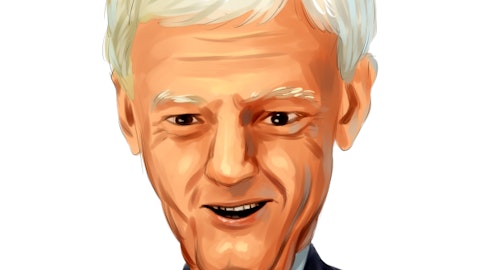Daniel Moore: Got it. Sorry, excuse me. Just — that’s helpful. Based on the pricing actions you’ve taken so far in ’22, or you took in ’22, as well as expected, so for Q1 of ’23, what would be kind of incremental revenue look like for full year ’23 if volumes were flat year-over-year?
Erik Aldag: Yes. So, I mean what we have line of sight to right now is probably mid-single digit impact on our revenue from pricing in 2023. We expect inflation to persist in 2023, but we do expect it at a much lower rate than we experienced last year, probably half of the inflation. We’re expecting around half of the inflation that we experienced in 2022. And a lot of that’s going to be front-end loaded. Some of the things that we’ve seen moderating are energy and energy derivative raw materials, like packaging. We do see inflation. The types of things we see continuing are around labor, transportation, particularly around rail, in certain of our raw material purchases, but it should be at a much lower rate than we experienced in ’22.
And we have the — we have pricing in place. I mentioned the 150 basis points of margin dilution that all of this inflation and pass-through of costs has impacted us by over the last two years, we plan to get that back at least in 2023 and we have line of sight to more than that as well.
Daniel Moore: Really helpful, Erik. That just leads to my next question, which is making sure we’re working off the right base. So, you mentioned 150 bps of margin impact over the last two years. So, are we looking at 2021 in terms of margins as getting back to those levels? Is that the way to think about it?
Erik Aldag: Yes. So, I would just say for the full year 2022, we did just under 12% operating income margins. And so, the pricing that we have in place and what we see today from an inflation perspective should get us 150 basis points on that in 2023. So, we’re looking at 13.5% to 14% margins by the second half on a run rate basis for this company.
Daniel Moore: Perfect. That’s exactly the — just wanted to make sure we’re working on the same page. I will jump back in the queue with a few follow-ups. Thank you very much.
Operator: We’ll now take our next question from Mike Harrison with Seaport Research Partners.
Mike Harrison: Hi, good morning.
Doug Dietrich: Hi, Mike.
Mike Harrison: And I want to pass along my congratulations to Erik and Lydia. In terms of the European sea freight issues, I’m just trying to understand — and maybe throw the natural gas in there as well, I’m just trying to understand a little bit more about the timing of when you saw that. Obviously, the China COVID impact was something that happened in December. The winter weather in the U.S. was something that happened in December. But natural gas and power costs in Europe were pretty well-known quantity and there was a lot of concern. We discussed it on calls. So, I’m just trying to understand why that caught you guys by surprise and maybe a little bit more about the timing of when those became a much bigger issue relative to your expectations?




